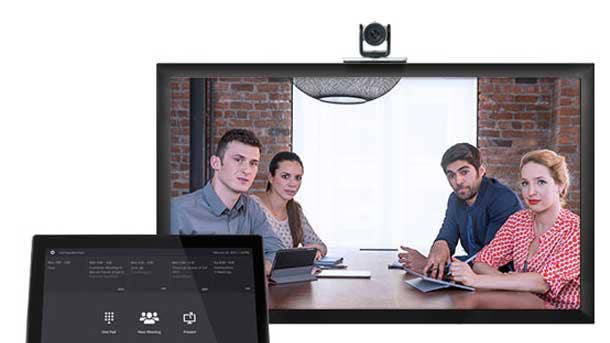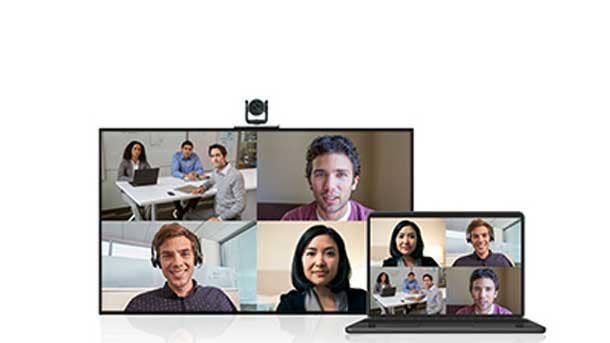Poly’s Nick Tidd Calls For ‘Tremendous Upgrade Opportunity’ For Collaboration-Minded Partners
‘I ask partners: Show me another vendor in your portfolio is giving you those kinds of opportunities for growth,’ Poly Channel Chief Nick Tidd tells CRN.

No Resting On Laurels
Videoconferencing giant Poly, formerly Polycom and Plantronics, has long been a mainstay in the collaboration arena. Sixty years, in fact, as Plantronics celebrated its 60th anniversary in May. And while the company has always been channel-friendly, Poly is pulling out all the stops this summer, starting with a virtual partner conference — the first one in years — that pulled in about 20,000 attendees.
The collaboration space is a competitive market that has only grown hotter as a result of the COVID-19 pandemic, which had home workers snapping up personal cameras for their home offices and companies developing videoconferencing strategies, in some cases, overnight. To that end, Poly has long cultivated partnerships with third-party collaboration leaders, such as Microsoft Teams, RingCentral, and Zoom. That’s because they know customers want the best of the best, without ripping and replacing their existing investments. At the same time, the channel wants to plug the right solutions in for their customers — and especially technology that can play nice with others.
Nick Tidd, vice president of Poly’s Global Partner Organization, sat down with CRN this month to talk partner program updates, supply chain challenges, and the opportunity for the channel when it comes to collaboration technology refreshes that many enterprises are considering in a post-pandemic world.
Here’s what Tidd had to say.

What changes or updates have you made to the one-year old Poly Partner Program?
As we came up on the beginning of our fiscal year in April, it was the anniversary of the first combined Plantronics and Polycom partner program. A few themes really came out to us [over] the previous 12 months. The first theme, as we talked to our partners, was that their success is based on their reputation in the market, which is directly correlated to their level of expertise. So, we introduced at our partner conference in June, product designation areas of expertise, in addition to our traditional medal levels. Those areas of expertise are extremely relevant in today’s world. There are both folks working from home and folks returning to office working in hybrid environments, so [we introduced] specialization around headsets, specialization around voice, and specialization around video. Because for Poly and our differentiation in the market with our partners, is our ability to create an environment where work is no longer a place. It’s what you do and how you do it. By bringing product expertise to the forefront, we’re bringing expertise on sales positioning, and technical acumen. What was interesting to us is that our hypothesis going into the program at the beginning of the year was to go deep and wide in the community and have them selling portions of the portfolio. And what came back from the community was, [partners] really want to specialize in certain areas.
The second area is referred to as demonstratable partner value. Our partner community was asking us to be more prescriptive in the benefits that are being made available to the community. We have been onboarding partners at a staggering rate, in a good way. My philosophy has always been, you don’t want to create share shift and margin erosion, you want to be able to have a fair and equitable program that has both strong business and value propositions. So, we spent a fair bit of time with the partner community on different levels within the program. Think: traditional financial instruments, deal registration, rebates, MDF, partner locator. All of those best and make them more scalable. Our messages are resonating, our technology is resonating, [and] our partner message is resonating.

What have you done to simplify Poly’s partner program?
I’m always being asked to pay a lot of attention to ensuring that the program is not too complex and to make sure that it’s scalable. We introduced a full suite of upgraded and new training programs both on the sales side and the technical side. We introduced a three-tiered approach from specialist, to a professional, to an expert on our technical side. Then, the same thing on the sales side because the thirst for knowledge, again, coming back to the partner being able to differentiate themselves, they’re looking to us to be able to create better programs for them to train them better to have better tracks.
We are now about 15 months into my new Partner Relationship Management [PRM, Poly’s partner portal] and within our partner relationship platform, we introduced what we call “Partner Journeys.” The journey is really enablement, so inviting partners to participate in bite-sized modules at their own pace. We can both prescribe to them and they can elect journeys around our program itself or the modules. We create easier, guided access, so it’s not on them to try to find the material for themselves. We can guide them to the material that is relevant to them. We also have spent a lot of time creating toolkits that are all encompassing of the materials. In the last 12 months, we’ve really become partner-obsessed on ease of doing business We’re now working to understand how do I take those that were detractors and move them to promoters? What we have we done to make it easier is we have been investing heavily in tools, content and material.
To give you a data point to back that up – and we look at this weekly — I’m a firm believer in partner analytics that without analytics, you don’t really have a pulse on what’s happening. I can tell you that over the course of the last six weeks, the average user in our portal comes back 6.5 times a week. That’s up there in best of class. You’re always looking to see how you are creating stickiness. [We’re looking at] what content we get better at and how can we be easier to do business with everything concentrated through our PRM.

How did the pandemic change or influence Poly’s product development roadmap?
I would say that with our latest round of our personal series, our [Poly Studio P Series, personal video conferencing webcams] of products — our P15 video bar for single use, our P5 USB camera and our P21, which is an all in one console — it’s these you’ll use for working from home a couple of days a week. Having that experience of being able to basically work from anywhere and be part of the room, has caused a technology refresh. That first refresh happened when we all went home — you grabbed everything you possibly could off the desk, any USB device you can find in the marketplace, and you hunkered down. Now, organizations are rethinking that technology experience from the remote side. That’s where the P series was derived from.
[The pandemic] has forced us to think about the personal use of technology, and then it’s forced us to really look at our management and our analytics. This led to the introduction of Poly+, which is our platform for device management and device usage, and it gives us the ability to provide analytics to the organizations on where and how devices are being used. It’s about connecting the technology and the spaces and the people within those spaces. That’s been a direct derivative of what’s become critically important. As we think about future — calendaring, social distancing, and making sure rooms are not exceeding capacity on the room — all of those health attributes are being taken into consideration. And those are all insights from the product itself.

How big of an issue has supply chain disruptions been for Poly?
Supply chain issues have been challenging for us. It has caused us to rethink our platforms, from the simplest thing of working with our distributors on delivery notification, to how we do the allocation of product, to how we prioritize to the partner community and how we share advice with them to the best of our ability. So, we’ve had to rethink our allocation process.
We’ve just finished a complete assessment of our supply chain capability and what’s unique for Poly is that we, in addition to our OEMs, also own our own manufacturing facility. So, how do you balance between your OEMs and your own manufacturing to create a supply chain? And then how do you look at things like distance travel for product in getting faster to our collective and customers. So how we ship how we route products, and how we work with the channel is really caused us to take a step back and evaluate our supply chain. We brought in a new leader for our supply chain organization, Grant Hoffman [Poly’s chief supply chain officer who joined in January], who comes to us with a tremendous amount of experience, both in tech and packaged goods. He and his team have been evaluating how we can improve supply chain. There’s longer lead times on ships and longer lead time on glass that goes down to our cameras, so it’s how you fundamentally negotiate with your suppliers. It’s been challenging.

How big is the upgrade opportunity for partners in the collaboration space?
There is a tremendous upgrade opportunity. If you look at Skype retiring and the big movement to [Microsoft] Teams — our relationship with Microsoft has become even stronger. When we look at our relationship with Zoom and our different go to market motions with supporting them with both voice and video, and then with our other providers and partnerships in the space, whether that be RingCentral, or LogMeIn; being able to provide that single solution from both video and voice very much differentiates us from our from our competitors and it creates tremendous opportunity for our partners.
I always encourage our partners to look to manufacturers who are going to give you market growth opportunities. So, if I look in our space, [Research firm] Frost and Sullivan says that for calendar year 2021 over 2020, they are anticipating a 15 percent increase in headsets. There’s a 19 percent increase in video. A 15 percent increase in voice means that our addressable market for Poly — the opportunity that present for our partners, is a substantial increase year over year. We’re right in the sweet spots of where we need to be and that’s why I see partners voting whether their time and resources, both in terms of partner conference [attendance] and usage in our PRM, but also in the size and scale of partners, and we also see an increase in numbers of partners through distribution.
I’m very, very excited about the categories that we play in. I ask partners: Show me another vendor in your portfolio is giving you those kinds of opportunities for growth.